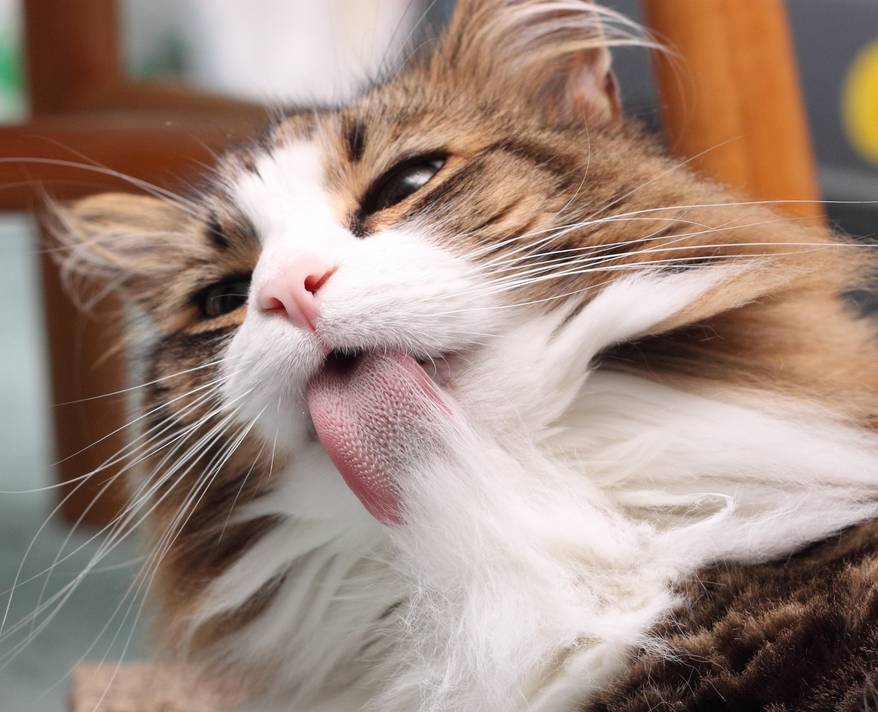
-
Find the right food for your pet
Take this quiz to see which food may be the best for your furry friend.
Find the right food for your pet
Take this quiz to see which food may be the best for your furry friend.
Featured products
 Adult 7+ Perfect Digestion Chicken, Whole Oats & Brown Rice Recipe Dog Food
Adult 7+ Perfect Digestion Chicken, Whole Oats & Brown Rice Recipe Dog FoodScience Diet's breakthrough nutrition supports ultimate digestive well-being & healthy microbiome for dogs age 7+
Shop Now Small & Mini Savory Stew with Chicken & Vegetables Dog Food
Small & Mini Savory Stew with Chicken & Vegetables Dog FoodA delicious complement to the nutrition of Science Diet Small & Mini 7+ dog food
Shop Now Adult Healthy Cuisine Roasted Chicken, Carrots & Spinach Stew Dog Food
Adult Healthy Cuisine Roasted Chicken, Carrots & Spinach Stew Dog FoodDelicious roasted chicken paired with tender vegetables in a succulent stew
Shop NowFeatured products
 Adult 7+ Tender Tuna Dinner Cat Food
Adult 7+ Tender Tuna Dinner Cat FoodWith delicious chunks in a decadent gravy
Shop Now Adult Savory Entrée Can Variety Pack Cat Food
Adult Savory Entrée Can Variety Pack Cat FoodPrecisely balanced nutrition with the delicious taste of savory minced chicken to help fuel the energy needs of cats during the prime of their life
Shop Now Adult 7+ Senior Vitality Chicken & Vegetable Stew Cat Food
Adult 7+ Senior Vitality Chicken & Vegetable Stew Cat FoodImproves Everyday Ability to Get Up & Go
Shop Now -
Dog
- Dog Tips & Articles
-
Health Category
- Weight
- Food & Environmental Sensitivities
- Urinary
- Digestive
- Joint
- Kidney
-
Life Stage
- Puppy Nutrition
- Adult Nutrition
- Senior Nutrition
Cat
- Cat Tips & Articles
-
Health Category
- Weight
- Skin & Food Sensitivities
- Urinary
- Digestive
- Kidney
-
Life Stage
- Kitten Nutrition
- Adult Nutrition
Featured articles
 Do Dogs and Cats have Belly Buttons?
Do Dogs and Cats have Belly Buttons?Learn whether cats & dogs have belly buttons like humans, what the function is, and if there are any health concerns associated with it.
Read More Why Are Dogs and Cats So Cute?
Why Are Dogs and Cats So Cute?If waggy puppy dog tails and furry kitten yawns make you swoon, you're not alone. Why are cats so cute? And, dogs too! Let's find out!
Read More Does My Pet Hate Me?
Does My Pet Hate Me?Learn tips for bonding with your pet if you've ever thought, 'My dog doesn't like me, or 'Why do I have a standoffish cat?'
Read More -


You love your cat, there's no doubt about that. But hairballs in cats? Not so much. Take some comfort in the fact that you're not alone in your fight against dreaded cat hairballs. In fact, a Hill's study showed the top condition–reported by 35 percent of cat parents–was hairballs. Here are some answers on how to reduce those cringe-worthy piles of hair.
What Are Hairballs?
Normally, hair ingested by your cat passes through her intestinal tract and is expelled in the litter box. But when the hair accumulates in the stomach or esophagus and isn't digested, she gets rid of the hair by vomiting it up. The form differs from cat to cat, but most frequently hairballs are cylindrical in shape due to their trip up the narrow esophagus.
It's not uncommon for a cat to vomit a hairball every week or two, according to Richard Goldstein, DVM, an associate professor of small animal medicine at Cornell University's College of Veterinary Medicine. Hairballs in cats are generally about an inch long, but can be as long as five inches and an inch thick. These little gifts that she leaves you will have a hue that almost matches her fur, but slightly darker in color because of her food and other gastric secretions from her digestive system.
Every cat seems to have their own style when it comes to hairballs; some cats will make loud crying noises almost as a warning of what she's about to do, while others are a bit stealthier before they vomit it up. But the common telltale sign that your cat is about to spit up a hairball is a loud retching and hacking noise.
Why Is My Cat Eating Hair?
Don't worry, your kitty doesn't see her coat as a midday snack. Cats ingest hair as they are self-groomers, which means they keep themselves clean by licking themselves. You may already know if you've been the recipient of a cat's fond kisses, their tongues are quite rough. That roughness gives your fastidious pet a way to remove the dirt, debris, and loose hair from her coat, allowing her to remain sleek and clean without human help (unlike most dogs, for instance). Unfortunately, however, cats are unable to digest their hair. That is why hairballs have to be excreted one way or the other.
Are Some Cats More Likely to Get Hairballs Than Others?
Long-haired cats, such as Persians and Maine Coons, are more susceptible to hairballs simply because they have more hair than their short-haired friends. Hairballs may be more common when the weather warms, too, as all cats tend to shed their heavier winter coats. Some cats just naturally groom more often than others as well, which makes them more likely to suffer hairballs.
Are Hairballs in Cats a Health Issue?
It depends. Hairballs in cats are a natural–albeit not fun–way for a cat to rid herself of hair that gets stuck in her stomach and are normal on occasion. But if they occur frequently or if you see or hear your cat retching, vomiting, or coughing without the eventual appearance of a hairball, you should talk to your veterinarian. Other signs that hairballs might be a health issue you should discuss with your vet include constipation, an extraordinary amount of hair in stools, a loss of appetite, and lethargy. Additionally, if you start to see the number of hairballs increase, or you see your cat grooming more often than usual, it might be a sign of a larger skin condition that you should speak to your vet about.
If your cat is having trouble with hairballs, your vet might want to do blood tests to make sure your cat's liver and kidneys are performing as they should. The vet might also recommend an ultrasound or take x-rays to make sure there are no blockages that could harm your cat. Vet Jeff Johansson, writing for Asheville Veterinary Specialists, details how a cat brought in with an elevated respiratory rate, loss of appetite, and increased salivation was suffering from a hairball firmly lodged in his esophagus, which was only discovered after x-rays. Johansson and his team were able to push the hairball back into the stomach, where it eventually passed naturally. In less severe cases, a laxative might work to pass the hairball, but laxatives should only be administered under the direction of a vet. In more severe cases, surgery might be the only way to remove a particularly stubborn mass of hair.


Tasty Tips
How Can You Manage & Prevent Hairballs?
There are three ways you can help minimize hairballs in your cat. First, you should groom your cat to reduce shedding. Regular brushing sessions will keep your cat from ingesting loose hair through self-grooming. Your brushing won't keep your cat from self-grooming, but will reduce the amount of hair she ingests. Grooming sessions with you also have the added benefit of being a bonding activity with your furry friend!
Second, there are products on the market such as shampoo and wet wipes that claim to prevent hairballs by controlling shedding. As with any product, however, check with your vet before you begin a regular regime to make sure it's well-suited for your kitty.
Last–but certainly not least!–know that food choice is very important in reducing hairballs. A hairball control cat food includes added natural fiber amongst its balanced nutrition to help move hair naturally through your cat's digestive system while also nourishing your cat's skin and coat to reduce shedding. Hill's® Science Diet® includes the following choices for cats with hairball issues:
- Science Diet® Adult Hairball Control. For cats ages 1 to 6.
- Science Diet® Adult Hairball Control Light. For cats ages 1 to 6 that struggle to maintain an optimal weight.
- Science Diet® Adult Hairball Control Savory Chicken Entré or Science Diet® Ocean Fish Entré. Two canned food choices for kitties who prefer canned food or who are on a blended wet-dry food routine.
- Science Diet® Adult 7+ Hairball Control. For older cats who struggle with hairballs.
- Science Diet® Adult Urinary Hairball Control. Supports the health of the whole urinary system.
- Science Diet® Adult Urinary Hairball Control Cat Food. A canned food version that, like the dry version, supports the health of the whole urinary system.
Your cat–and you–don't have to suffer from frequent hairballs. By brushing your cat and choosing to feed her a high-quality food that will keep her coat healthy while also keeping the hair moving naturally through her digestive system, you can say goodbye to hairballs.


Kara Murphy is a freelance writer and pet parent who lives in Erie, Pa. She has a goldendoodle named Maddie.
Related products

Improves Everyday Ability to Get Up & Go

With delicious chunks in a decadent gravy

Precisely balanced nutrition with the delicious taste of savory minced chicken to help fuel the energy needs of cats during the prime of their life

Supports energy level and beautiful fur in mature cats
Related articles
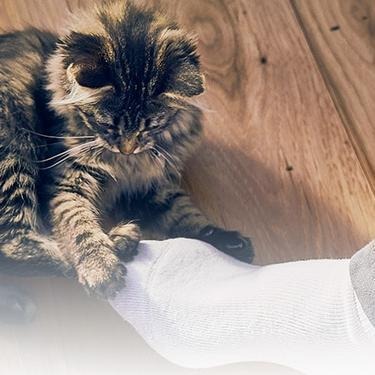
Discover which cat toys games your feline friend might like, and how they are great sources of exercise. Explore our library of articles to learn more.
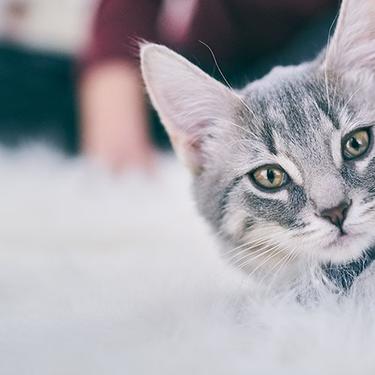
Discover the benefits of Hill's line of kitten foods and how they provide complete and balance nutrition for growing kittens.
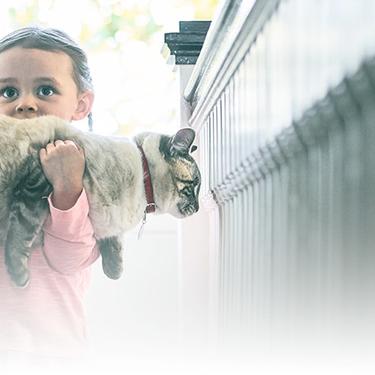
Discover how to identify cat sensitive skin and what you can do to help your cat thrive from head to paw.
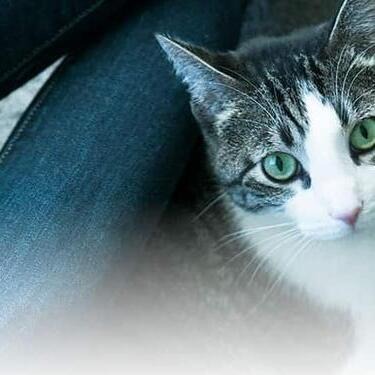
Brushing your cat's teeth is just as important as brushing your own. Learn signs or oral health problems in your cat and how to avoid them.

Put your cat on a diet without them knowing
Our low calorie formula helps you control your cat's weight. It's packed with high-quality protein for building lean muscles, and made with purposeful ingredients for a flavorful, nutritious meal. Clinically proven antioxidants, Vitamin C+E, help promote a healthy immune system.
Put your cat on a diet without them knowing
Our low calorie formula helps you control your cat's weight. It's packed with high-quality protein for building lean muscles, and made with purposeful ingredients for a flavorful, nutritious meal. Clinically proven antioxidants, Vitamin C+E, help promote a healthy immune system.


